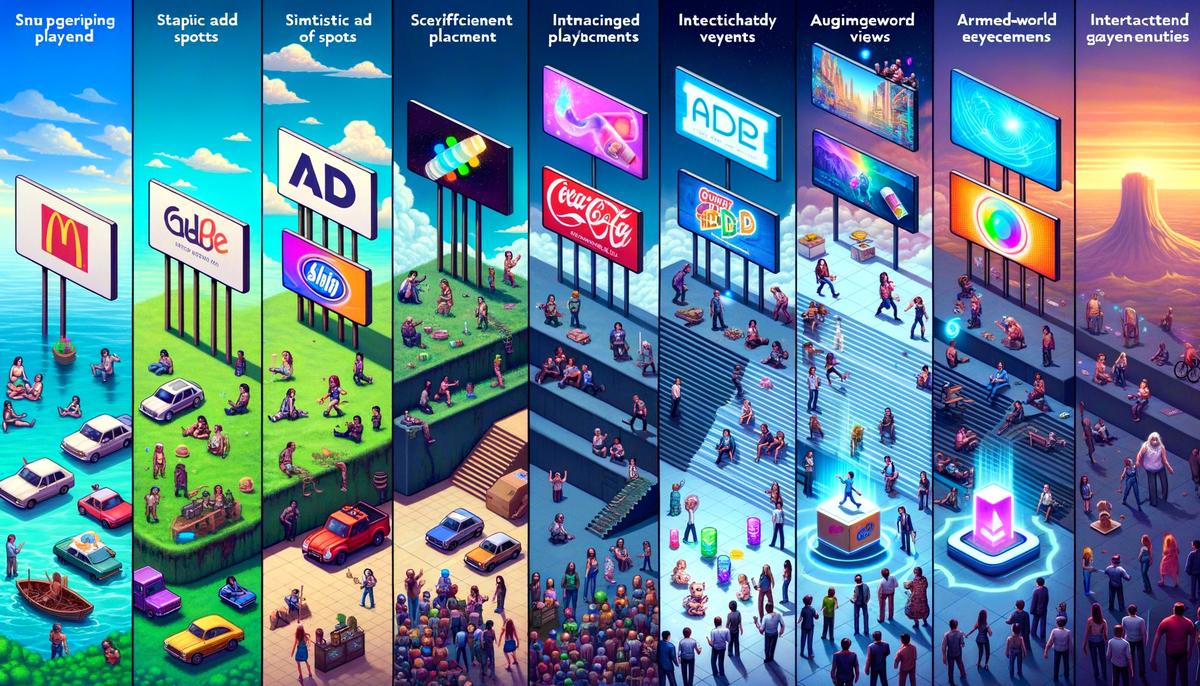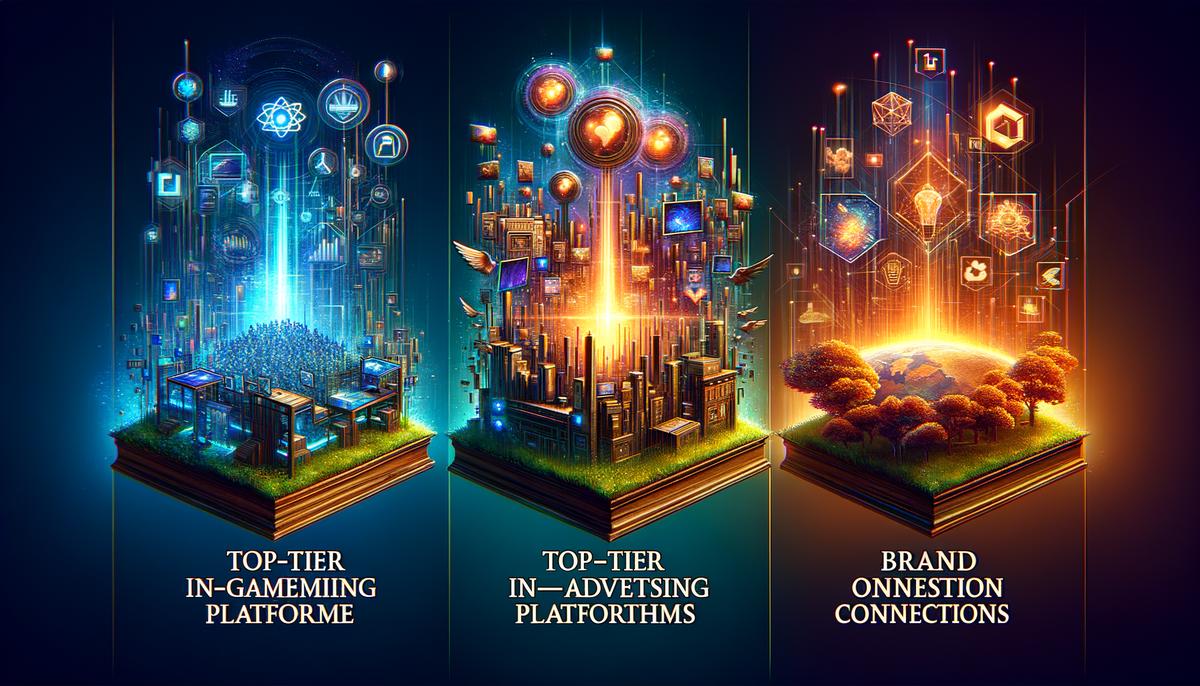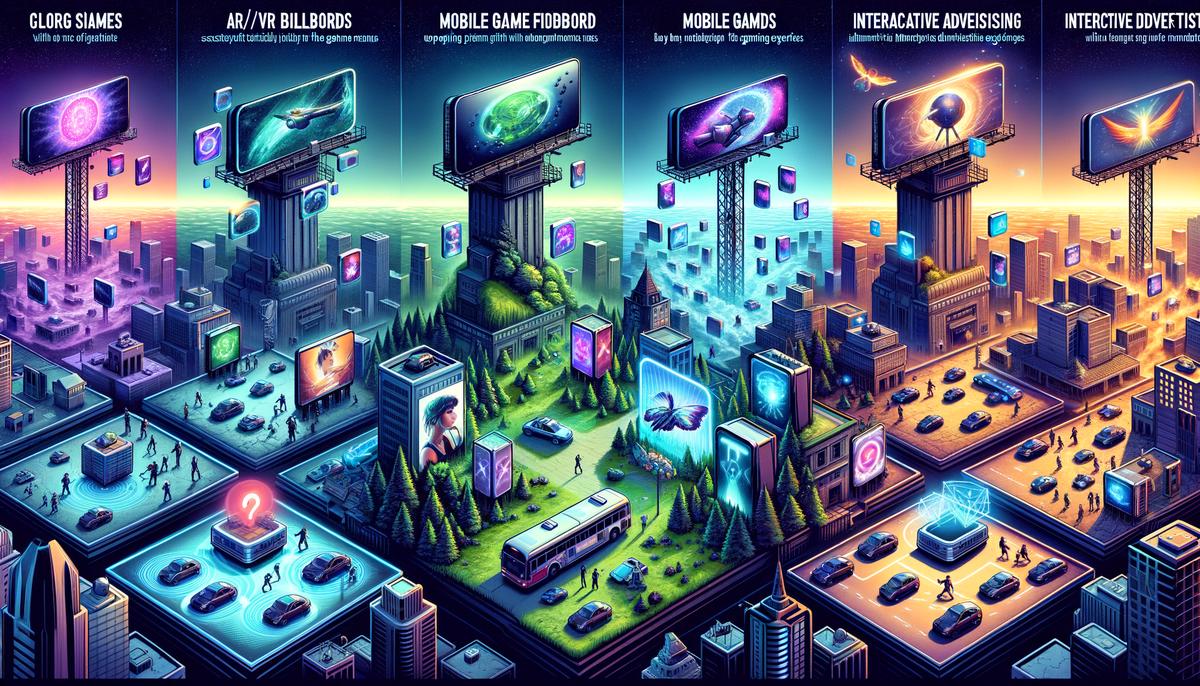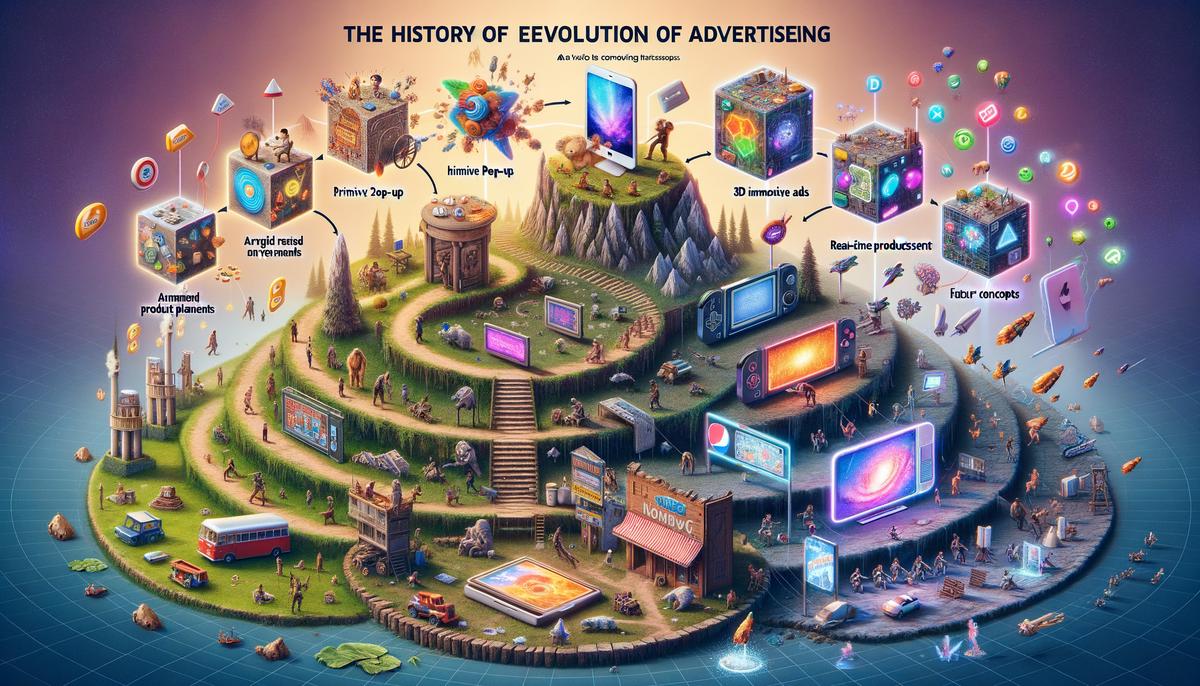The journey through in-game advertising reveals a landscape where creativity meets technology, transforming how brands connect with audiences. As we traverse this evolving field, the fusion of gaming and marketing strategies presents an opportunity to redefine engagement. This narrative aims to shed light on the intricacies of in-game advertising, offering insight into its progression from static billboards to dynamic, interactive experiences that resonate with gamers worldwide.
In-Game Advertising Evolution
In the early days, in-game advertising was mostly static, with billboards or signage within the game environment displaying unchanging logos or products. These ads lived forever in their games, promoting long-gone events or outdated products. As dynamic advertising technology emerged, ads could update in real-time and stay relevant to players, reflecting the ever-changing landscape of digital marketing. This technology marked a significant shift, turning games into live environments where advertisements could evolve alongside player experiences.
Product placements became a milestone, with branded items integrated into gameplay. Games started featuring real-life products gamers could interact with, blurring the lines between virtual and physical worlds. This increased realism and created a new level of brand engagement.
The rise of multiplayer online games changed the landscape further, with ad spots becoming valuable spaces in virtual cities visited by many players daily. These spaces attracted attention like never before, introducing a new era where in-game locations had real-world advertising value. Programmatic ad buying allowed for targeted advertising based on player data. Marketers could now reach specific demographics with precision, offering tailored ad experiences that resonated with individual players.
Augmented reality (AR) and virtual reality (VR), with their immersive experiences, provided another canvas for innovative advertising. AR brought ads into the real world, while VR created new worlds for brands to explore and engage with audiences.
Social and casual mobile games introduced rewarded video ads, where players could choose to watch ads in exchange for in-game benefits. Gamers no longer saw ads as distractions but as opportunities to gain valuable in-game assets.
Cross-platform capabilities allowed ads to follow players across devices, ensuring consistent brand messages and creating a unified experience not limited to a single medium.
In-game analytics tools evolved, providing advertisers detailed insights into ad performance and gamer interactions. This made in-game campaigns as trackable and analyzable as those on traditional digital platforms.
Interactive and playable ads transformed passive ad views into active engagement sessions, letting players trial a game or product within another game, combining entertainment with advertisement seamlessly.
Partnerships between game developers and major brands have led to unique in-game events, where advertising becomes an integral part of storyline and gameplay, offering entertaining, rewarding, and sometimes exclusive experiences.
From static billboards to immersive, interactive experiences that blend seamlessly with gaming environments, in-game advertising's journey reflects broader technological and cultural shifts. It has evolved from mere product placement to creating rich, engaging experiences that add value to both gamers and brands.

AdTech & Programmatic Platforms
The Digital Conduit: AdTech and Programmatic Platforms in In-Game Advertising
AdTech, short for advertising technology, and programmatic advertising platforms automate the buying, placement, and optimization of ads, transforming gaming landscapes into targeted real estate for advertisers. These sophisticated digital systems create a marketplace where digital ad spaces are auctioned in milliseconds.
At the core of these technologies lies a complex algorithmic engine designed to match advertisers with their ideal audience segments within the immersive worlds of video games. Programmatic platforms ensure ads reach their intended audience.
AdTech democratizes the advertisement landscape. Indie game developers and smaller studios can now access sophisticated ad campaigns that were traditionally reserved for larger players. These smaller entities can target their intended audience more effectively.
AdTech platforms bring an unprecedented level of detail to targeting. They analyze various signals—from in-game behavior to device type—helping advertisers deliver the right message to the right person at the right time. In the world of in-game advertising, this could mean serving an ad for virtual athletic gear right as a player enters a virtual sports arena.
Efficiency and optimization are other key advantages of AdTech. Campaigns can be adjusted in real-time based on performance data, ensuring advertising dollars are strategically placed. AdTech provides advertisers with the ability to monitor their campaigns closely.
AdTech and programmatic platforms also provide accountability and measurement within the digital advertisement space. They offer detailed analytics and performance metrics, allowing advertisers to see beyond mere impressions and click-through rates.
AdTech and programmatic platforms play a crucial role in the evolving landscape of in-game advertising, shaping it into an intelligently targeted, efficient marketplace. They connect advertisers and gamers, orchestrating a system where every ad is delivered at the right moment to resonate with its audience. As we venture further into this digital frontier, AdTech will continue to pave new avenues in this exciting, ever-expanding realm of interactive digital experiences.

Leading In-Game Ad Networks
Leading Pioneers in the In-Game Advertising Space
As the gaming universe expands, drawing players from around the globe into its captivating realms, a select group of companies emerges at the forefront of the in-game advertising space. These pioneers are actively shaping the future, pushing the boundaries of what advertising in gaming can be. Among them, Anzu, AdInMo, and Verve Group stand out as leaders, guiding brands into the uncharted territories of virtual worlds.
Anzu: Reinventing Realism in Virtual Worlds
Anzu has redefined in-game advertising by seamlessly integrating ads within gaming environments without disrupting gameplay. They embed realistic, interactive ads into virtual locations, making them feel like a natural part of the game world. Anzu's contextual approach, powered by 3D ad models, real-time data, and user engagement tracking, has made them an innovative and influential force in in-game advertising.
AdInMo: The Mobile Maestros
AdInMo excels in the mobile gaming arena, engaging audiences with its non-intrusive, click-free advertising. Its strength lies in its smooth integration within the mobile game experience, ensuring players remain immersed in their digital adventures while still interacting with advertisements. AdInMo's platform is built on respect for the player experience, pushing mobile in-game advertising to new heights where everyone benefits: gamers play uninterrupted, and advertisers reach their target audience.
Verve Group: The Geographers of the Gaming Globe
Verve Group's data-driven targeting and programmatic advertising create highly engaged gaming audiences. Operating under the philosophy that user data should guide ad placement, Verve Group tailors advertising experiences through the gaming landscape that are both relevant and resonant. Their technology efficiently scans, identifies, and connects with audiences through a sophisticated process.
What unites Anzu, AdInMo, and Verve Group as leaders isn't just their ability to place ads into games effectively. It's their shared vision of enhancing the gaming experience through advertising that adds value rather than detracting from it. Their approach to in-game advertising is comprehensive, weaving narratives that connect games and brands in a mutually beneficial way.
By leveraging advanced technology, prioritizing player immersion, and delivering measurable outcomes for advertisers, these companies illuminate the sometimes complex world of digital advertising. They understand that in-game advertising isn't just about displaying messages; it's about fostering connections between brands and gaming audiences, creating memorable experiences that resonate beyond the screen.
As gaming continues to rise as a dominant form of entertainment, these forerunners in the in-game advertising industry are not just riding the wave—they're making it bigger, better, and more exciting for everyone involved. With innovation as their driving force and technology as their tool, Anzu, AdInMo, and Verve Group are creating new worlds where advertising is as engaging as the games themselves.

Challenges and Opportunities
Navigating the Dual Realms of Challenges and Opportunities in In-Game Advertising
Embarking on the journey of in-game advertising is like exploring a complex landscape filled with both rewards and obstacles. As advertisers, game developers, and players navigate this multifaceted space, they encounter significant challenges that test their resolve. Yet, within these trials lie valuable opportunities to redefine the essence of advertising in gaming realms.
The Challenge of User Experience Disruption
The core of the challenge is disrupted user experience. A gamer deeply engaged in gameplay does not take kindly to a sudden, intrusive ad. This can trigger frustration, turning what's meant to be a captivating advertisement into an unwelcome interruption. For advertisers and game developers, the challenge is to manage this issue, ensuring ads enhance the gaming experience instead of hindering it.
The Enigma of Ad Blocking and Evasion
Ad blocking is a significant adversary that enables users to bypass advertisements, rendering carefully planned campaigns ineffective. The challenge presents a dual problem: respecting player autonomy while also ensuring advertisements reach their intended audience—an ongoing issue requiring both strategy and tact from advertisers.
The Valley of Opportunities: AR/VR and Untapped Mobile Audiences
Amidst these challenges, the realm of in-game advertising is rife with untapped potential. The emerging fields of Augmented Reality (AR) and Virtual Reality (VR) offer promising opportunities, enabling experiences where advertisements can be as engaging as the games themselves. Billboards within a VR space can entice adventurers with virtual items or puzzles to solve via AR cues. Herein lies the potential to transform advertisements into interactive elements—making the experience exciting for the player.
The vast expanse of mobile gaming—a domain filled with untapped audiences—awaits pioneering advertisers. With billions of smartphone users globally, the key is to engage through innovation. Mobile games offer a wealth of possibilities for advertisers to weave narratives and rewards seamlessly into the gameplay, turning ad moments into highlights rather than hindrances.
Embarking on the Quest
The domain of in-game advertising beckons, brimming with potential. The path forward is marked with trials: maintaining harmony in user experience, navigating ad avoidance, and unlocking the potential within AR/VR and mobile frontiers.
These challenges are stepping stones, guiding us toward transformation. By leveraging creativity and technology, we can craft advertisements that complement gameplay. The opportunities on the horizon shine brightly—signaling an era where advertising transcends mere exposure, evolving into an engaging component of the gaming journey.
In-game advertising stands at a crossroads—a portal to realms where advertisements inspire rather than intrude; enrich rather than detract. As experienced navigators and bold explorers, we chart a course through this multifaceted landscape, driven by the dual forces of challenge and opportunity. Upon this journey, we uncover pathways to foster connections that resonate across worlds—both virtual and beyond.

In conclusion, the essence of in-game advertising lies in its ability to weave brand messages into the fabric of gaming experiences seamlessly. By prioritizing engagement and leveraging innovative technologies, advertisers can create memorable interactions that enrich the player’s journey. This approach not only elevates the gaming experience but also establishes a deeper connection between brands and their audiences, marking a pivotal shift in digital advertising strategies.
Summary
- Guttmann A. Share of internet users who use ad blocking software in the United States as of March 2020, by age group. Statista. 2022.
- Statista. Augmented reality (AR) market size worldwide in 2017, 2021, and 2022. 2022.
- Mordor Intelligence. In-Game Advertising Market – Growth, Trends, COVID-19 Impact, and Forecasts (2021 – 2026). 2021.




